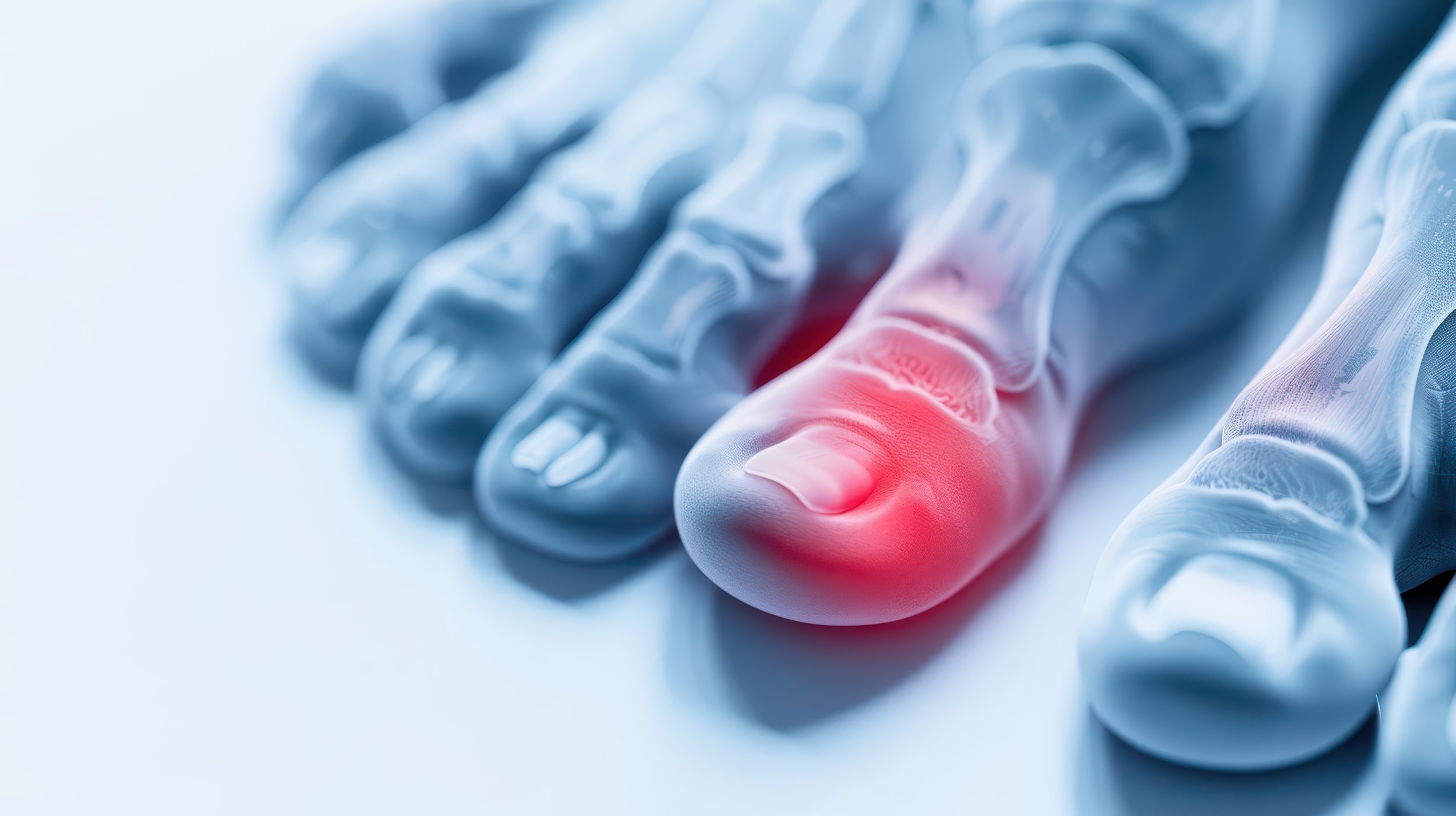
INGROWN NAILS
The incidence of ingrown nails can vary depending on various factors such as age, gender, activity level, and footwear.
It is estimated that ingrown toenails affect about 1 in 10 people at some point in their lives.
It is most common in adolescence and young adults and occurs more frequently in males than females.
Risk factors include improper fitting footwear, poor nail trimming practices, genetic predisposition, and certain medial conditions like diabetes.
An ingrown toenail, or onychocryptosis, occurs when the nail edge penetrates the surrounding skin, leading to discomfort, inflammation, and potential infection. This condition frequently affects the great toe.
Clinical Presentation:
Patients typically present with pain, redness, and swelling at the nail margin. In advanced cases, purulent discharge and granulation tissue may be evident, indicating secondary infection.
Management Strategies:
Treatment approaches are determined by the severity of the ingrown toenail:
• Conservative Management: For mild cases, recommend warm saline soaks, proper nail trimming techniques, and avoidance of tight footwear. Topical antibiotics may be prescribed if infection is present.
• Nail Bracing: This non-invasive method involves applying a brace to the nail to correct its curvature over time, thereby reducing pressure on the periungual skin. Studies have shown nail bracing to be effective in providing immediate and long-term relief, particularly in diabetic patients who need to avoid surgery when possible. At Podiatry Medic we use renowned OnyFix Nail Bracing.
• Surgical Intervention: In cases where conservative measures fail or the condition is severe, partial or total nail avulsion may be performed. Surgical treatment is more effective at preventing the nail from regrowing inwards compared to non-surgical treatments.
At Podiatry Medic, we offer comprehensive evaluation and management of ingrown toenails, tailoring treatment plans to each patient’s specific needs to ensure optimal outcomes.
Post-surgical care:
Post-surgical instructions, as well as a full dressing pack will be given by your Podiatrist after the procedure.
A follow-up appointment and dressing change is arranged for 2-3 days post procedure.

